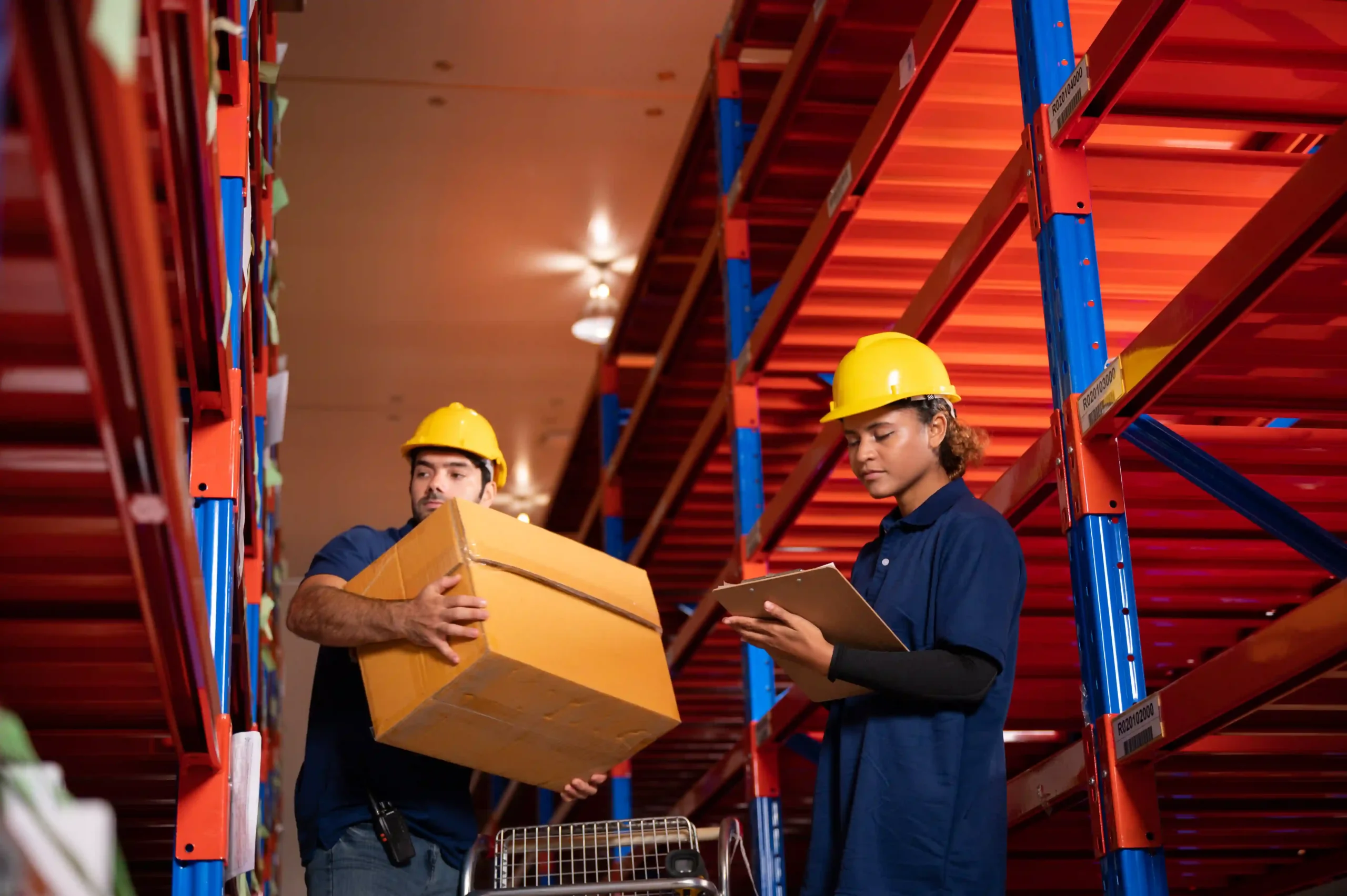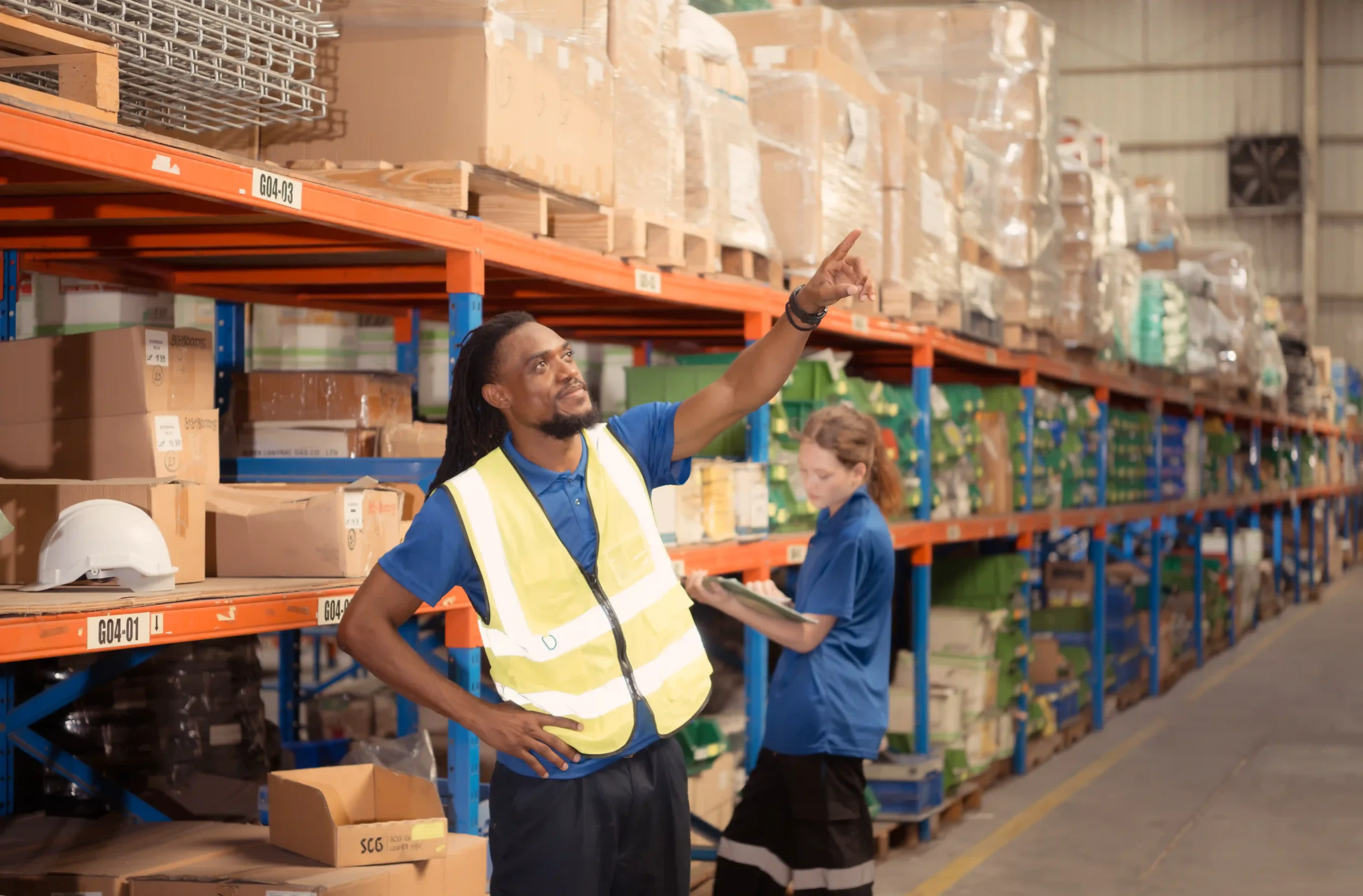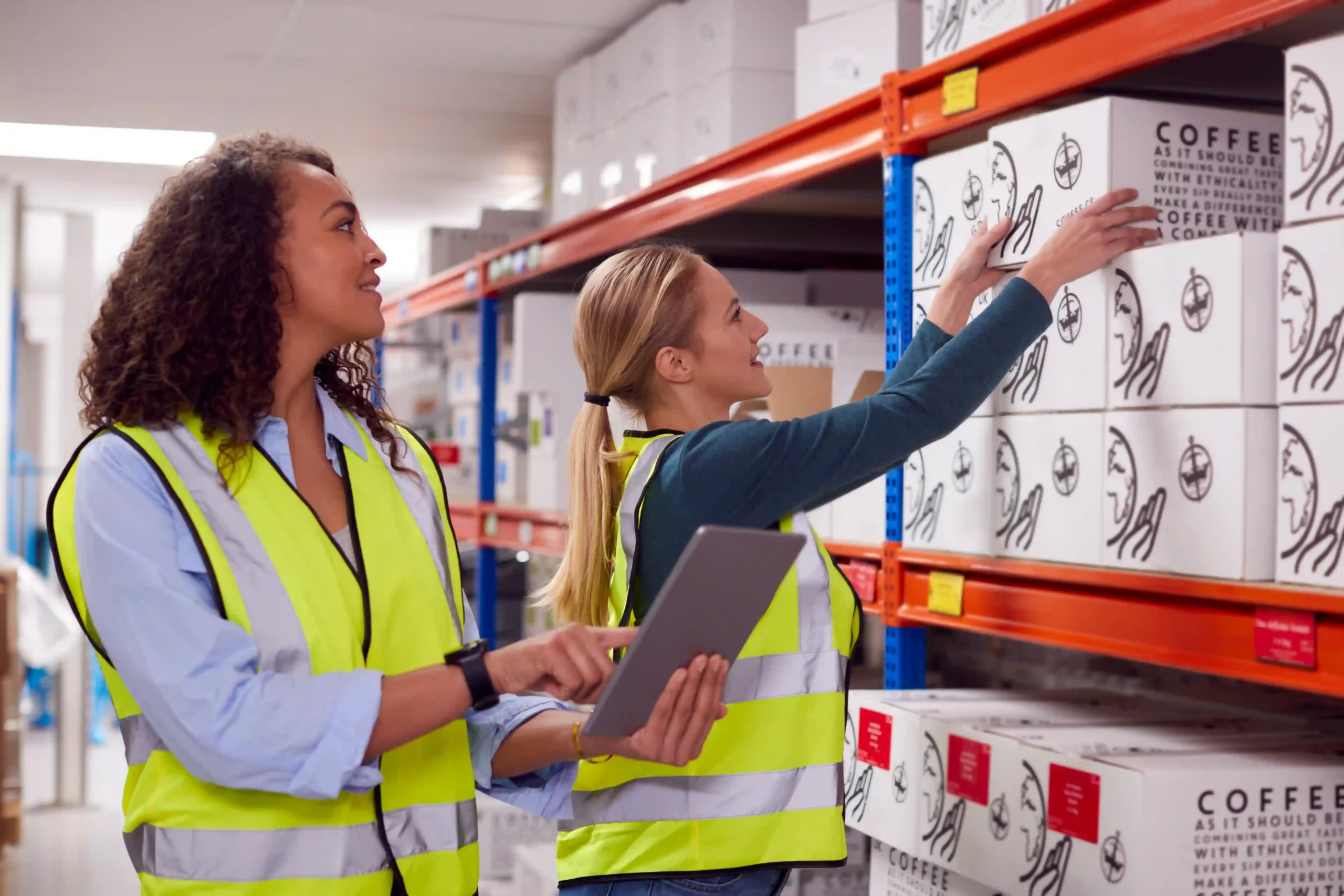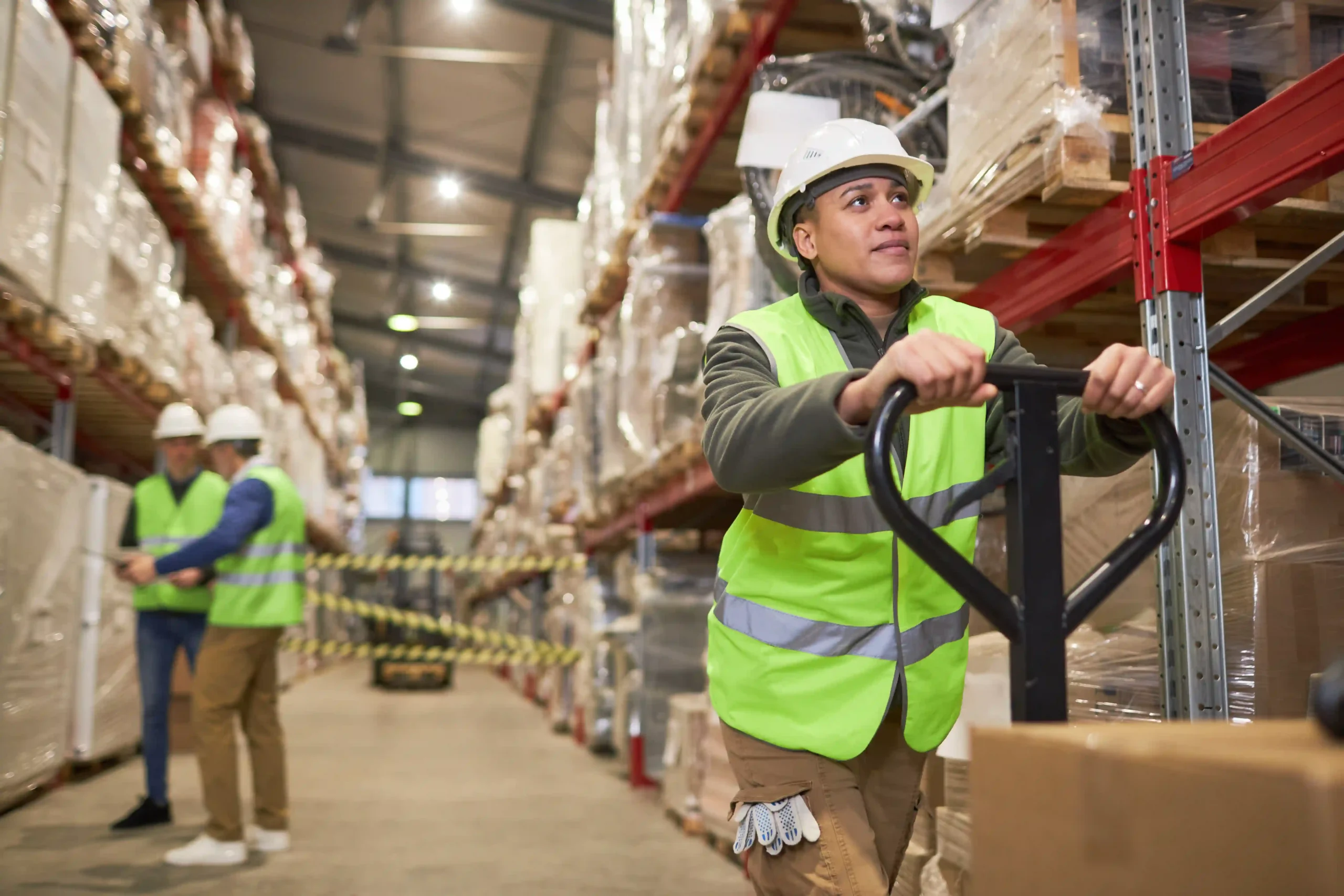Labeling racks in warehouse settings means placing readable identifiers—usually tags, signs, or stickers—on shelving systems used to store inventory. These identifiers might show aisle, rack, shelf, or product location.
In our industry, where precision and speed determine profit, labeling racks in warehouse environments isn’t just helpful—it’s mission critical. A well-thought-out labeling strategy can turn a chaotic space into a tightly run operation.
Think of it like organizing your kitchen. If every drawer and cabinet had a label, it would take less time to find your utensils, ingredients, or tools.
The same principle applies to a 100,000-square-foot distribution center. When labels are visible, consistent, and readable from a distance, employees can pick, pack, and stock more efficiently—and with fewer mistakes.
That leads to happier customers and a healthier bottom line.

In my 35 years of running Tri-Link FTZ, I’ve learned that consistency drives productivity. One of the most underrated drivers of that consistency is how we approach labeling racks in warehouse operations.
It starts with visibility. Clear labels allow pickers and forklift drivers to locate the right item quickly.
In fast-paced warehouses, seconds matter, especially when orders pile up and accuracy can’t be compromised. But it’s not just about speed.
Labels are a form of communication. They tell you what’s stored where, which shelf is designated for which SKU, and even safety limits like weight capacity.
When you have seasonal staff or temporary workers, labels become the best training assistant. A new hire can navigate with minimal supervision just by following a well-labeled system.
Every time we onboard a new client, one of the first things we audit is their labeling system. Inconsistent font sizes, missing labels, handwritten stickers—these are red flags.
When fixed, we’ve seen operations improve dramatically within days. Orders go out faster. Errors drop.
The floor becomes safer. It all starts with how you label your racks.
When I walk into a warehouse that’s struggling, the signs are usually everywhere—but most often, it starts with labeling. Inadequate or missing rack labels cause confusion at every level.
If you’ve ever watched a worker stand frozen in front of a shelving unit, second-guessing whether they’re pulling the right item, you know what I mean. That small hesitation adds up hundreds of times per shift.
It kills momentum. One of the biggest issues is inventory misplacement.
Without reliable labeling, you end up with products in the wrong spots, sometimes not found until months later—or never. That means backorders, write-offs, and phone calls from unhappy customers.
And let’s not ignore the safety aspect. Improper labeling can also lead to pallets being overloaded, because no one sees the weight restriction noted on a faded or missing label.
Then there’s the human cost. Employees working in a disorganized environment get frustrated.
Morale drops. Training new staff takes longer.
Mistakes multiply. If your warehouse staff spends more time searching than stocking or shipping, the root cause could very well be poor rack labeling.
At Tri-Link FTZ, fixing this is often the fastest way we bring a client’s operation back under control.
Over the years, I’ve seen rack labels evolve from handwritten tags to smart, integrated systems. There’s no one-size-fits-all solution.
The best labeling method depends on your space, your products, and how often your inventory shifts. But here’s a breakdown of the most effective types we’ve deployed.
Barcode labels are by far the most common. They work seamlessly with handheld scanners and WMS platforms.
They speed up picking and tracking, reduce human error, and provide digital traceability. In fast-moving warehouses, they’re a must.
Then there are color-coded labels—simple, effective, and easy on the eyes. We often use these in combination with letters and numbers to categorize product types or storage zones.
Magnetic labels are perfect for seasonal or rotating stock. They can be repositioned without leaving a mess, which makes them ideal for businesses with changing inventory flows.
On the other hand, retro-reflective labels work well in larger warehouses where forklift operators scan from a distance. Hanging signs, too, are great for upper-level racks that aren’t easily accessed by foot.
Every type has its role. For example, in cold storage areas, we use special adhesive labels that don’t crack or peel in freezing temps.
And in operations that require flexibility, we’ve even implemented reusable plastic labels with removable adhesives. It all depends on the challenge you’re solving.

When we start working with a new warehouse partner, our first step is a walkthrough—and during that tour, we assess how labels are currently being used. The method you choose for labeling racks in warehouse operations needs to fit the warehouse’s physical layout, workflow patterns, and scanning technology.
Get this wrong, and you’ll waste both time and money. If your warehouse is straightforward with evenly spaced aisles and racks, a standard linear labeling method will work just fine.
For example, you can go with something like “A01-R03-S02”—Aisle 1, Rack 3, Shelf 2. It’s clean, intuitive, and ideal for training new employees.
But if your operation is more complex, like in a multi-level or serpentine rack system, then you’ll need a more advanced structure. That’s when we introduce custom logic systems, sometimes even layering in zone-based identifiers or floor-to-ceiling numbering.
You also have to think about the workforce. If you’re in an industry with high turnover, go with simplicity.
The easier it is to teach your labeling system, the fewer mistakes your team will make. In highly automated environments, compatibility with scanning systems and integration with software like BarTender or your WMS is crucial.
We’ve helped companies choose systems based on seasonal needs too. In one case, we used a mix of magnetic and adhesive labels so that staff could adjust the layout during Q4 peak without relabeling everything from scratch.
It’s all about making the system work for you—not the other way around.
Not all labels are created equal. I’ve seen warehouses fall apart simply because their labels couldn’t hold up to the environment.
One time, a client used regular paper labels in a cold storage unit. Within weeks, they were peeling, unreadable, and causing massive delays.
That’s why choosing the right material matters when labeling racks in warehouse environments. For most conditions, we recommend polyester.
It’s tough, resists scratches, and holds up in high-traffic zones. In cold storage, you’ll want specialty adhesives that can bond even in sub-zero temperatures.
If your warehouse deals with heat, moisture, or dust, opt for weatherproof materials with a matte finish—this reduces glare and keeps things readable. Retro-reflective materials are perfect when visibility from afar is key, especially if your team uses forklifts with mounted scanners.
And let’s not forget magnetic labels. They’re incredibly useful for temporary or seasonal needs and eliminate the headache of sticky residue when repositioning.
Durability and readability must work hand in hand. A faded label is just as bad as no label at all.
Over the years, we’ve developed a system at Tri-Link FTZ that ensures labels are always in the right place. First rule: eye level wherever possible.
This isn’t just for convenience—it reduces strain and saves time. If racks go high, we use aisle signs, floor guides, or hanging indicators to assist in fast identification from all angles.
Text size should match the distance it needs to be read from. We often follow the formula: distance (in mm) divided by 200 = font size.
So if a label is meant to be read from four meters away, the minimum font height should be about 20mm. We always recommend bold, sans-serif fonts like Arial or Helvetica for maximum clarity.
Use high-contrast colors—black on white, white on dark blue, or yellow with black text all work well. Avoid glossy finishes in well-lit areas to prevent glare.
Place labels consistently on every rack and make sure they’re free of obstructions. A little attention to visibility during setup goes a long way in daily operations.

In modern warehouses, labels are more than visual markers—they’re data points. The real magic happens when your labeling system talks directly to your Warehouse Management System.
We’ve helped several clients connect their barcodes and rack locations into platforms like NetSuite, Fishbowl, and SAP. With integrated systems, you get real-time tracking.
As soon as a picker scans a label, inventory is updated instantly. This helps with restocking alerts, shrinkage reports, and fulfillment monitoring.
We use label printing software like BarTender to ensure that every label is created to spec, encoded correctly, and linked to the right product or bin.
Integration isn’t just for big players. Even smaller warehouses benefit from real-time visibility.
It improves forecasting, purchasing, and customer service. And with more companies adopting mobile scanning, getting your labels synced to WMS platforms is now more critical than ever. Read more here.
We recently worked with a flooring distributor that had 40+ warehouse locations and nearly 3,000 SKUs. Before implementing a labeling system, items were regularly misplaced, and order fulfillment was lagging.
We introduced a structured alphanumeric rack labeling strategy tied to their scanning system. Within 30 days, their fulfillment accuracy jumped by 18%.
Another example was a cold storage operation handling perishable food. Labels were falling off due to condensation.
We helped them switch to aluminum-backed labels and adhesive strips rated for -20°F. Problem solved.
Labor time was reduced by 25%, and complaints dropped overnight. Then there was a high-turnover e-commerce center.
Their team struggled with training and inventory errors. We implemented a color-coded rack labeling system and used easy-to-read aisle signs.
In less than two weeks, new hires were picking faster than the veterans had before. The proof is always in the numbers. Read more here.
Labeling racks in warehouse spaces isn’t just about convenience—it’s a safety matter. OSHA requires clear labeling in areas where weight limits or hazardous materials are stored.
We make sure labels include visual alerts, especially in zones where forklifts operate or heavy loads are placed overhead. Compliance also means choosing materials that won’t peel, fade, or fall. It’s dangerous when critical info goes missing.
We’ve implemented systems that align with ISO standards and industry-specific labeling requirements for pharmaceuticals, food storage, and chemicals.
Good labeling also supports safe workflow design. For example, directional labels help with one-way traffic systems in narrow aisles, preventing accidents.
Clear signage can guide emergency evacuations or fire response teams. In short, proper labeling keeps people safer and your business compliant.

Labels aren’t set-it-and-forget-it. We treat them like any other equipment—scheduled checks, updates, and replacements.
Every quarter, our facility managers conduct a labeling audit. They look for peeling, fading, or misaligned signs and reorder replacements as needed.
If your warehouse gets reorganized or product categories shift, the labeling system needs to evolve too. That’s why we recommend using removable or magnetic labels in high-change areas.
You should also keep a log of label IDs tied to your WMS. When inventory gets moved, you can track it digitally and physically without confusion.
Have a plan for emergency replacements. Keep a small print station or backup labels on hand.
If your team can replace a damaged label immediately, you avoid workflow disruptions. Treat your labeling system as part of your core infrastructure, not a side task.
There’s no reason to do everything manually anymore. We use BarTender software for large-scale label design and automation.
It integrates with databases, scanners, and WMS systems to print custom labels in bulk. It also lets you change templates on the fly, which helps when SKUs change.
Label printers like Zebra and Dymo are reliable for on-site needs. We’ve also partnered with vendors that offer durable materials, pre-designed label kits, and mounting hardware.
If your team doesn’t have time, there are labeling service providers who will map, print, and install the entire system for you. Some warehouses are even going a step further with RFID tags or scannable LEDs for real-time product tracking.
We’re currently piloting a hybrid system that uses magnetic rack labels alongside digital shelf-edge technology to manage live inventory for a major electronics client.
The cost of labeling racks in warehouse environments depends on the scale, but the ROI is nearly always positive. On average, we see an upfront investment between $2,000 and $8,000 for medium-sized warehouses—this includes design, materials, printers, and training.
But the long-term gains far outweigh the costs. Accurate labeling reduces picking errors, which can save thousands per month in refunds or replacements.
It also reduces labor costs by improving speed and reducing wasted motion. The biggest payoff is customer satisfaction—when orders go out fast and error-free, business grows.
We also look at indirect savings: fewer training hours, reduced reliance on managers for location guidance, and better space utilization. One of our clients saw a 3-month ROI after implementing magnetic and barcode labels tied to their WMS.
That’s the kind of result you can count on when it’s done right.
Labeling racks in warehouse operations isn’t just about stickers or signage—it’s about creating a smarter, safer, and more profitable environment. At Tri-Link FTZ, we’ve implemented these systems across hundreds of facilities for over 35 years, and we’ve seen firsthand how powerful the right labeling strategy can be.
Whether you run a 10,000-square-foot facility or a multi-site logistics operation, your labeling system can be the glue that holds your workflow together. From improved inventory accuracy to faster training, better safety, and scalable growth—it all starts with how well you mark your racks.
If you’re ready to upgrade your labeling process, let us help. We know what works because we’ve done it—time and time again.
Share this article
We have other resources available upon request as well as one-on-one support and personalized answers, just like our services.
Simply contact us anytime and we’ll get back to you to answer your questions and provide meaningful answers that show you how Tri-Link supports your logistics, reduces costs, and accelerates efficiency.
Tri-Link delivers exceptional FTZ and 3PL services tailored to your global trade needs.
Our solutions combine innovation, quality, and efficiency to exceed your expectations and meet your specific requirements.